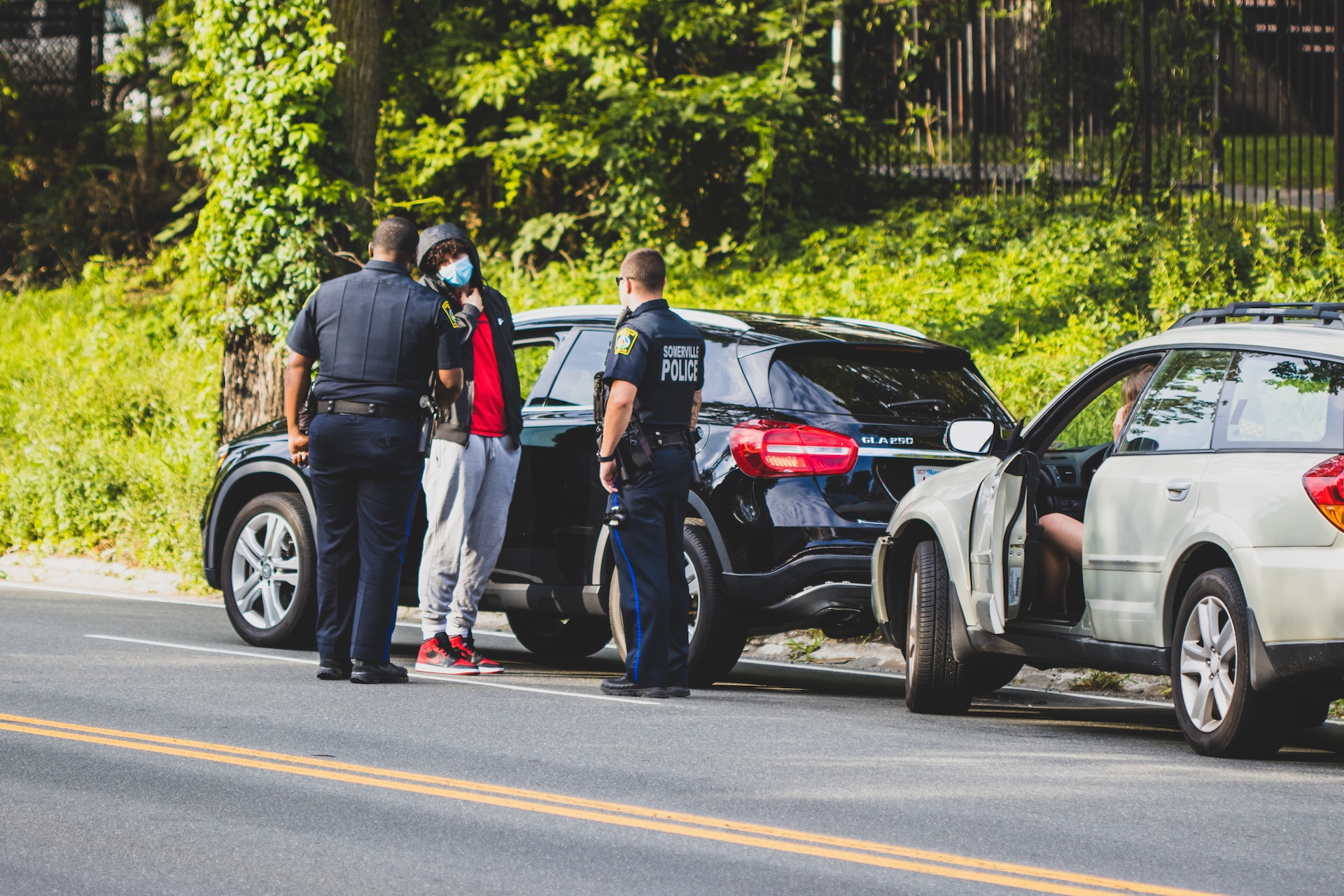Car accidents can be a stressful and overwhelming experience, especially if you have been rear-ended. Rear-end collisions are among the most common types of accidents on the road, and they can lead to serious injuries, property damage, and financial loss. It’s important to know what steps to take after a rear-end accident to protect yourself and your rights. In this article, we will provide you with a comprehensive outline of what to do after a rear-end accident to help you navigate the aftermath with confidence and ease.
By following the steps outlined in this guide, you can ensure that you take the necessary actions to protect yourself and your interests.
Table of Contents
- Assess the Damage
- Exchange Information
- File an Accident Report
- Contact Your Insurance Company
- Seek Medical Attention
- Consult with an Attorney
- Final thoughts
Assess the Damage
The first step after a rear-end accident is to assess the damage. This includes checking for injuries, inspecting the damage to your car, and taking pictures of the damage.
The safety and well-being of you and your passengers should be your top priority. Check yourself and your passengers for injuries, and seek medical attention immediately if necessary. Even if you don’t feel any pain or discomfort right away, it’s still important to get checked out by a medical professional to ensure that there are no underlying injuries.
Once you have assessed your physical condition, turn your attention to your vehicle. Inspect the damage to your car and assess the extent of the damage. Take note of any scratches, dents, or other visible signs of damage, as well as any broken parts or systems. This information will be helpful when filing an insurance claim.
It’s also important to take pictures of the damage to your car. Use your phone or camera to take clear pictures of the damage from multiple angles. These pictures will serve as evidence of the damage and can help support your insurance claim.
Assessing the damage after a rear-end accident is crucial for your safety and your ability to file an insurance claim. Take the time to check for injuries, inspect your car, and take pictures of the damage. By doing so, you will have a clear understanding of the situation and be better equipped to handle the aftermath of the accident.
Exchange Information
After assessing the damage, the next step is to exchange information with the other driver involved in the accident. This includes obtaining their contact and insurance information and providing your own information as well. It’s also important to get contact information from any witnesses who may have seen the accident.
Start by approaching the other driver and asking for their name, phone number, and insurance company information. Make sure to write down this information, or take a picture of their driver’s license and insurance card for your records. If the police are present, they may also provide you with a copy of the accident report which will contain the other driver’s information.
In exchange, you will need to provide your own contact and insurance information to the other driver. This includes your name, phone number, and insurance company information. Make sure to provide accurate and up-to-date information to avoid any issues down the line.
Additionally, if there were any witnesses to the accident, ask for their contact information as well. Witness statements can be valuable in supporting your insurance claim, so it’s important to gather as much information as possible.
Exchanging information after a rear-end accident is a critical step in the process. Be sure to obtain the other driver’s contact and insurance information, provide your own information, and gather contact information from any witnesses. By doing so, you will have the information necessary to file a successful insurance claim and protect your interests.
File an Accident Report
Filing an accident report is an important step after a rear-end accident. This will provide an official record of the accident, which can be helpful when filing an insurance claim or seeking legal action. Here’s what you need to know about filing an accident report:
The first step is to contact the police. If there are any injuries, or if the damage to your car is significant, it’s important to call 911 immediately. If the accident is minor, you may be able to simply call the non-emergency police line to report the accident.
When speaking with the police, provide details of the accident, including the location, time, and any relevant information about the other driver or vehicles involved. Be honest and accurate in your statements, and avoid making assumptions about who is at fault.
Once the police have arrived on the scene, provide them with additional information as needed. They may ask for your driver’s license and insurance information, as well as the other driver’s information.
After the police have completed their investigation, they will provide you with a copy of the accident report. This report will include important details about the accident, including the date and time, the location, and a description of the damages and injuries sustained.
Filing an accident report is an important step in the aftermath of a rear-end accident. Contact the police, provide accurate details about the accident, and obtain a copy of the report. By doing so, you will have an official record of the accident that can be used to support your insurance claim or legal case, if necessary.
Contact Your Insurance Company
After exchanging information and filing an accident report, the next step is to contact your insurance company. Here’s what you need to know about contacting your insurance company after a rear-end accident:
First, notify your insurance company of the accident as soon as possible. Be prepared to provide the date and time of the accident, the location, and any details about the damages and injuries sustained. You will also need to provide the other driver’s contact and insurance information.
When speaking with your insurance company, be honest and accurate in your statements. Avoid exaggerating or downplaying the damages or injuries sustained, as this can cause issues with your insurance claim.
Your insurance company will assign a claims adjuster to your case, who will investigate the accident and determine the extent of the damages. The adjuster may contact you for additional information or to schedule an inspection of your vehicle.
Throughout the claims process, be sure to follow up on the status of your claim. Keep a record of all communication with your insurance company, including the date, time, and details of the conversation.
Contacting your insurance company after a rear-end accident is an important step in the claims process. Notify your insurance company of the accident, provide accurate details about the damages and injuries sustained, and follow up on the status of your claim. By doing so, you will be better equipped to navigate the claims process and ensure that you receive the compensation you are entitled to.
Seek Medical Attention
Even if you feel okay after a rear-end accident, it’s important to seek medical attention. Here’s what you need to know about seeking medical attention after a rear-end accident:
First, if you feel any pain or discomfort, or if you hit your head during the accident, it’s important to get a medical evaluation. Some injuries, such as whiplash, may not show symptoms right away, so it’s important to get checked out even if you feel fine.
If you need medical attention, seek treatment right away. This may include going to the emergency room, urgent care, or making an appointment with your primary care physician.
Be sure to keep records of any medical treatment you receive, including the name of the doctor, the date and time of the appointment, and a description of the treatment provided. This will be important documentation when filing an insurance claim or seeking legal action.
In addition, if you experience any symptoms in the days or weeks following the accident, be sure to follow up with a healthcare provider. Delayed onset of symptoms is common after a rear-end accident, and it’s important to get prompt medical attention to ensure proper treatment.
Seeking medical attention after a rear-end accident is an important step in ensuring your health and wellbeing. Get a medical evaluation if needed, keep records of medical treatment, and follow up with a healthcare provider if you experience any symptoms in the days or weeks following the accident. By doing so, you can help ensure that you receive proper medical care and support.
Consult with an Attorney
If you’ve been rear-ended in a car accident, it’s important to understand your legal rights and options. Here’s what you need to know about consulting with an attorney after a rear-end accident:
First, consider seeking legal advice. An attorney who specializes in car accident cases can help you understand your legal options and ensure that your rights are protected.
An attorney can help you navigate the insurance claims process and ensure that you receive the compensation you’re entitled to for damages, medical expenses, and lost wages.
If the other driver’s insurance company is not willing to provide a fair settlement, an attorney can help you determine if legal action is necessary. This may include filing a lawsuit against the other driver or negotiating a settlement outside of court.
It’s important to note that the statute of limitations for personal injury claims varies by state, so it’s important to consult with an attorney as soon as possible to ensure that you don’t miss any important deadlines.
Consulting with an attorney after a rear-end accident can be an important step in protecting your legal rights and ensuring that you receive the compensation you’re entitled to. Consider seeking legal advice, understand your legal rights and options, and determine if legal action is necessary. By doing so, you can help ensure that you receive the support and compensation you need to move forward after a rear-end accident.
Final thoughts
If you’ve been rear-ended in a car accident, it’s important to take action promptly to ensure that you protect your health, safety, and legal rights.
It’s important to take action promptly after a rear-end accident, as delays can impact your ability to file an insurance claim or seek legal action. Be sure to document any damage, injuries, or medical treatment, and keep track of all communication with the other driver and insurance company.
In conclusion, while being rear-ended in a car accident can be a stressful and overwhelming experience, taking these steps can help ensure that you receive the support and compensation you need to move forward. Remember to prioritize your health and safety, while also protecting your legal rights.

The Retired Cop dedicated 35 years to serving as a police officer, where he gained extensive experience by working in various specialized units such as patrol, SWAT, major case investigations, and traffic enforcement. His diverse background in law enforcement has equipped him with a deep understanding of criminal justice and operational procedures. This expertise allows him to offer valuable insights into legal matters, drawing from his extensive knowledge of the justice system.





